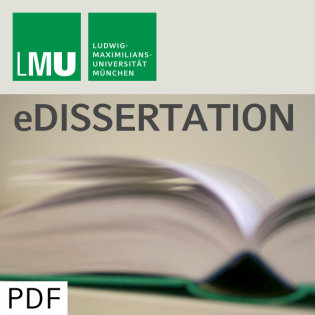
The geometry and physics of Abelian gauge groups in F-Theory
Beschreibung
vor 9 Jahren
In this thesis we study the geometry and the low-energy effective
physics associated with Abelian gauge groups in F-theory
compactifications. To construct suitable torus-fibered Calabi-Yau
manifolds, we employ the framework of toric geometry. By
identifying appropriate building blocks of Calabi-Yau manifolds
that can be studied independently, we devise a method to engineer
large numbers of manifolds that give rise to a specified gauge
group and achieve a partial classification of toric gauge groups.
Extending our analysis from gauge groups to matter spectra, we
prove that the matter content of the most commonly studied F-theory
set-ups is rather constrained. To circumvent such limitations, we
introduce an algorithm to analyze torus-fibrations defined as
complete intersections and present several novel kinds of F-theory
compactifications. Finally, we show how torus-fibrations without
section are linked to fibrations with multiple sections through a
network of successive geometric transitions. In order to
investigate the low-energy effective physics resulting from our
compactifications, we apply M- to F-theory duality. After
determining the effective action of F-theory with Abelian gauge
groups in six dimensions, we compare the loop-corrected
Chern-Simons terms to topological quantities of the
compactification manifold to read off the massless matter content.
Under certain assumptions, we show that all gravitational and mixed
anomalies are automatically canceled in F-theory. Furthermore, we
compute the low-energy effective action of F-theory
compactifications without section and suggest that the absence of a
section signals the presence of an additional massive Abelian gauge
field. Adjusting our analysis to four dimensions, we show that
remnants of this massive gauge field survive as discrete symmetries
that impose selection rules on the Yukawa couplings of the
effective theory.
physics associated with Abelian gauge groups in F-theory
compactifications. To construct suitable torus-fibered Calabi-Yau
manifolds, we employ the framework of toric geometry. By
identifying appropriate building blocks of Calabi-Yau manifolds
that can be studied independently, we devise a method to engineer
large numbers of manifolds that give rise to a specified gauge
group and achieve a partial classification of toric gauge groups.
Extending our analysis from gauge groups to matter spectra, we
prove that the matter content of the most commonly studied F-theory
set-ups is rather constrained. To circumvent such limitations, we
introduce an algorithm to analyze torus-fibrations defined as
complete intersections and present several novel kinds of F-theory
compactifications. Finally, we show how torus-fibrations without
section are linked to fibrations with multiple sections through a
network of successive geometric transitions. In order to
investigate the low-energy effective physics resulting from our
compactifications, we apply M- to F-theory duality. After
determining the effective action of F-theory with Abelian gauge
groups in six dimensions, we compare the loop-corrected
Chern-Simons terms to topological quantities of the
compactification manifold to read off the massless matter content.
Under certain assumptions, we show that all gravitational and mixed
anomalies are automatically canceled in F-theory. Furthermore, we
compute the low-energy effective action of F-theory
compactifications without section and suggest that the absence of a
section signals the presence of an additional massive Abelian gauge
field. Adjusting our analysis to four dimensions, we show that
remnants of this massive gauge field survive as discrete symmetries
that impose selection rules on the Yukawa couplings of the
effective theory.
Weitere Episoden

vor 8 Jahren

vor 8 Jahren







Kommentare (0)